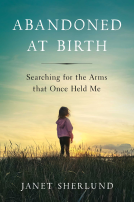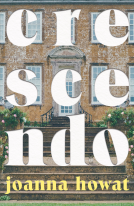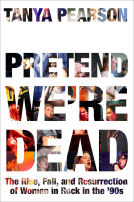
The Muses on Their Lunch Hour
by Marjorie Garber
This title was previously available on NetGalley and is now archived.
Send NetGalley books directly to your Kindle or Kindle app
1
To read on a Kindle or Kindle app, please add kindle@netgalley.com as an approved email address to receive files in your Amazon account. Click here for step-by-step instructions.
2
Also find your Kindle email address within your Amazon account, and enter it here.
Pub Date Dec 01 2016 | Archive Date Nov 25 2016
Description
Two themes emerge consistently in Garber's latest exploration of symptoms of culture. The first is that to predict the "next big thing" in literary studies we should look back at ideas and practices set aside by a previous generation of critics. In the past several decades we have seen the reemergence of--for example--textual editing, biography, character criticism, aesthetics, and philology as "hot" new areas for critical intervention. The second theme expands on this observation, making the case for "cultural forgetting" as the way the arts and humanities renew themselves, both within fields and across them. Although she is never represented in traditional paintings or poetry, a missing Muse--we can call her Amnesia--turns out to be a key figure for the creation of theory and criticism in the arts.
Advance Praise
"In this wonderful collection of what she modestly calls ‘musings,’ Marjorie Garber makes an irresistible case for the value of literary study and for herself as one of its great modern practitioners. The essays are brave in their commitments and brilliant in their execution. They are at once provocative and playful—and abidingly humane." —David Scott Kastan, Yale University
Available Editions
| EDITION | Other Format |
| ISBN | 9780823273737 |
| PRICE | $22.95 (USD) |
| PAGES | 192 |
Links
Featured Reviews
 Reviewer 238609
Reviewer 238609
The Muses on Their Lunch Hour by Marjorie Garber is a collection of essays on subjects inspired by the nine traditional muses.
These essays include "Asking Literary Questions" to "Shakespeare" and "Ovid: Then and Now". We take a look at myth in literature in the essay entitled "Ovid: then and now" and it's ideas as they relate to evolutionary adaptation.
I think this would be a good book for those interested in literary studies. I thought the essays presented were a great look at literary analysis among other things.
I acknowledge that I received this book free of charge from NetGalley and the publisher in exchange for my honest and unbiased review.
 Michelle S, Reviewer
Michelle S, Reviewer
This uniquely titled “Muses on Their Lunch Hour” the 1950’s vintage book cover photo of three women sitting in a diner smoking cigarettes, implicate a possibility of things to come. With the intrigue of literary discussion and persuasion, Professor Marjorie Garber PhD, an educator at Harvard University, cites examples relating to the Ovid, symbolism related to the Fig Leaf Metaphor, psychoanalysis, notable authors, including the influence of Freud and Kafka. As a Shakespearian scholar, several essays explain the valued importance and impact of Shakespeare on a worldwide level. Dr. Garber has written dozens of books with diverse subject matter: besides Shakespeare, these include literary, social, cultural, educational, sexual themes, including LGBT studies and others.
With the timeless writings in literature about the nine muses of Greek and Roman mythology, Dr. Garber suggested the muses could be updated to reflect currents times. Perhaps we need a muse of social media, or architecture, a muse of Bluegrass or Hip Hop music. Are the many muses truly needed to represent and reflect poetry? Famous late writers as John Lennon, J.D. Salinger, and Robert Lowell have referenced the 10th muse, which Trollope identified as the “goddess of journalism”.
Prior to the 1870’s literary type courses were studied predominately in Latin, Greek and Hebrew. While students/intellectuals always discussed and debated Shakespeare, the first formal Shakespeare course wasn’t introduced at Harvard until 1876. At Cambridge, the English department wasn’t developed until 1919. The International Shakespeare Association was established in 1974. The notable books, Harold Bloom’s “The Anxiety of Influence” (1973) and Northrup Frye’s “Anatomy of Criticism” (1957) were discussed at length. Books must be chosen by the reader, the majority and influence of literature in the U.S. is from the current and previous century. In the 19th century the major literary influence of study was from prior centuries.
A fascinating comparison was made between the Fig Leaf Metaphor of things hidden, concealed, that cover the genitalia on ancient sculptures, statues, and other forms of art-- also at the Freud Museum (London), artist Renate Ferro’s display shows boxes, chests, cases, cupboards “that gently open and close” symbolically suggesting that the “serious baggage” of emotion related to libido, hysteria, separation, anxiety, ego, trauma, and dreams are also carefully hidden and concealed.
Speaking of Freud, it was very interesting that psychoanalysis which reached its peak as a popular therapeutic practice in the 1960’s-1970’s, is currently studied in literature in the forms of non-fiction, biography, memoir, novels, short stories etc. Psychoanalysis is no longer taught in the curriculum or course work of formal psychology studies.
The influx of STEM students (science, technology, engineering, mathematics) flooding colleges and universities, are high demand vocations by employers, yet have lower educational requirements in the humanities and liberal arts. Dr. Garber is passionate about literary education and teaching, explaining her position from the lectern teaching 400-600 students. While there were big words and esoteric passages throughout the book, they were surprisingly few. The book was written for all levels of educational backgrounds, with excellent references to Shakespeare throughout the chapters, and is recommended especially for academic study or research. ~ With thanks and appreciation to NetGalley for the e-DRC for the purpose of review.
This book was too dense for me. I loved the cover but did not love the book,
 Educator 329973
Educator 329973
This book could have a much better flow but the information within is interesting. I'll use some of the references in the book to look up/research further information. It's a good resource for people studying or teaching the subject but I wouldn't assign it for people to read.
 Rebecca T, Educator
Rebecca T, Educator
A collection of Garber’s essays on the humanities and Shakespeare in particular. The distinctive contribution of literary scholarship, she argues, is a way of asking questions “about the way something means, rather than what it means, or even why.” This requires “close and passionate attention to the rich allusiveness, deep ambivalence, and powerful slipperiness that is language in action.” On change over time, she argues that older authors read a “canon,” the works of accomplished predecessors, while more recent ones read “episodically and in a non-linear or non-historicized fashion, in part because there’s so much to read and ‘sampling’ it has no compelling direction.” Twentieth century authors read their peers, not their predecessors. Her discussion of the anxiety of influence, which might also be the anxiety of impotence, is too complex to summarize, but thought-provoking, bringing in big data and the lack of anxiety many authors have about the past.
Garber also discusses theater and postmodern theory as linked in their resistance to the idea of a full, complete character, rather than a fragment of identity, and then connects that to “projective identification” in current political thinking and the paranoid style. This discussion leads her, in her allusive way, to the current valorization of STEM fields over the humanities, as colleges’ ways of projecting that which is abject onto a small part of what is in fact the educational project as a whole. The humanities, “already prone to self-doubt and self devaluation (they are ‘useless,’ they are ‘old,’ they are ‘light,’ they are speculative rather than empirical, they take too long to produce degrees, they are hermetic rather than accessible), become readily complicit in the fantasy of the university that none of these attributes attach to it.”
She ends with discussing “Shakespeare” as the representative of these attitudes towards the humanities. Shakespeare is now understood as themes and plots, not language; the plays are “owned” by the humanities in general, not English departments. Garber urges a variant of “strategic essentialism” for the humanities, what she calls “strategic generalization”—affirmatively using the power of the best broad-based lecture courses (like hers, of which I am a veteran) to defend the value of the humanities. The Shakespeare lecture has, she contends, for a century been a central, memorable place for lectures and thus it is a site from which we can defend the pedagogical project of the humanities at large. (Garber recognizes that her history is a history of Harvard Shakespeare lectures, not community college or other lectures, but she sees it as a model to aspire to.) Some best practices of the past, she argues, should be understood as current best practices as well: “asking students to read the text twice through before, or perhaps instead of, reading critical essays; the memorization and recitation of passages; vivid classroom performance (by the instructor and not just the students); and indeed philology, if by that we might mean, today, among other things, an acquaintance with word history and derivation through the OED.” Grabbing onto the podium is literally a way to retake prominence in the coversation about good education. Today’s students “are often engaged by performance, more so sometimes than they are willing to admit. When performance is combined with personal commitment, an intimate knowledge of the work under discussion, and a manifest respect for intellectual exchange, the effects can be exhilarating. Add Shakespeare to the mix, and the odds for success increase, as it were, dramatically.”
 Stella G, Reviewer
Stella G, Reviewer
A wonderful collection of short thoughts, essays on the 'muses' and their importance on literature. I found the writing interesting, but ultimately a little boring. While the idea of 'the muses' influence on modern writing is a topic to explore further, we have to think, as readers and writers, is it the influence of the muses, or are there a limited number of stories? Are we retelling the same story over and over in the end....the stories that started WITH these muses.
 Alison G, Bookseller
Alison G, Bookseller
Very interesting subject, and a very appealing cover! I really enjoyed the author's set up for the various chapters and how she interwove Shakespeare, Ovid, and other literary figures into an overarching commentary on the academic humanities. My favourite chapter was, of course, Fig Leaf!
Readers who liked this book also liked:
Patti Callahan Henry
General Fiction (Adult), Historical Fiction, Women's Fiction


















